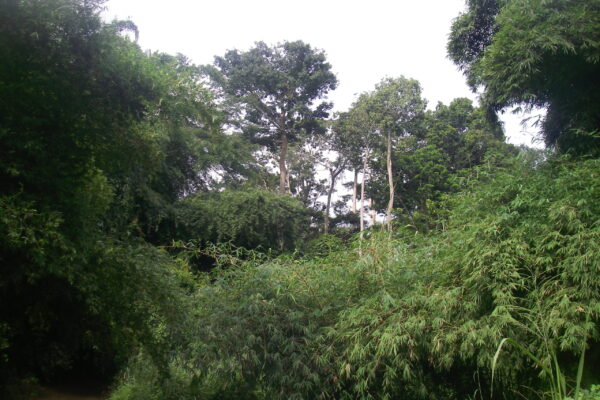2022-05-06 テキサス大学オースチン校(UT Austin)

Tropical vegetation near Lake Bosumtwi in Ghana. Photo credit: William Gosling
これは、温室効果ガスレベルの上昇に対応して熱帯林が拡大する可能性が低いことを意味する。この結果、二酸化炭素の貯蔵に不向きな草原に代わって、炭素を多く含む木本植物が熱帯生態系の二酸化炭素貯蔵量の増加につながると期待されていたのだが……。
この研究成果は、5月5日付の米科学誌「サイエンス」に掲載された。研究チームは、テキサス大学オースティン校の科学者を含む、オランダ、イギリス、アメリカの科学者で構成されている。
<関連情報>
- https://news.utexas.edu/2022/05/06/tropical-forests-benefit-less-from-elevated-atmospheric-co2-than-thought/
- https://www.science.org/doi/10.1126/science.abg4618
熱帯の木本植生の変化を決定する要因として、CO2よりも長期的な水分の変化の役割が強いこと A stronger role for long-term moisture change than for CO2 in determining tropical woody vegetation change
WILLIAM D. GOSLING,CHARLOTTE S. MILLER,TIMOTHY M. SHANAHAN,PHILIP B. HOLDEN ,JONATHAN T. OVERPECK AND FRANK VAN LANGEVELDE
Science Published:5 May 2022
DOI: 10.1126/science.abg4618
Abstract
Anthropogenically elevated CO2 (eCO2) concentrations have been suggested to increase woody cover within tropical ecosystems through fertilization. The effect of eCO2 is built into Earth system models, although testing the relationship over long periods remains challenging. Here, we explore the relative importance of six drivers of vegetation change in western Africa over the past ~500,000 years (moisture availability, fire activity, mammalian herbivore density, temperature, temperature seasonality, CO2) by coupling past environmental change data from Lake Bosumtwi (Ghana) with global data. We found that moisture availability and fire activity were the most important factors in determining woody cover, whereas the effect of CO2 was small. Our findings suggest that the role of eCO2 effects on tropical vegetation in predictive models must be reconsidered.



